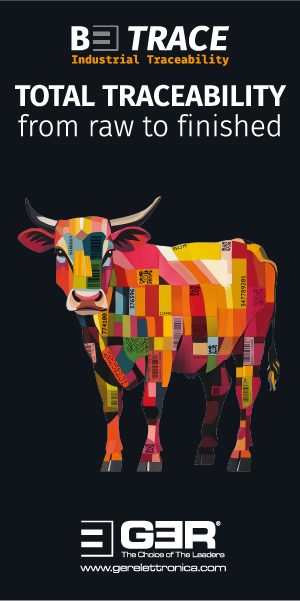Market Intelligence—28.11.23
Macroeconomics
The news remains focused on the military conflicts in the Middle East and Ukraine. The human suffering and the impact on politics and economics are too great for any other news to take precedence.
Fortunately, hostage exchanges in the conflict between Israel and Hamas have begun and one can only hope that negotiations will continue. For all parties involved, the end of hostilities and the release of the hostages is the first step towards being able to talk about any possible solutions for the future. This is urgent for the safety and lives of the people in the region, but this conflict naturally also influences world events in general. Whether a political solution could actually heal the deep wounds inflicted by history and recent events is aother matter. Added to this, of course, is the fact that the conflict has also spread far beyond the borders of the Middle East into societies around the world. Polarisation between cultural communities is also increasing in other nations and societies.
As significant as the wars may be, there are other events that have been important in politics in recent weeks. The presidents of the US and China met in San Francisco and spoke with each other for several hours. As much as the two superpowers are insisting on their positions, it is also clear that they recognise that an ultimate confrontation would lead to great economic damage. They are unlikely to budge from their positions, but it is possible that they will return to a more pragmatic approach to relations.
Tensions between North and South Korea are rising again and it remains to be seen how far North Korea will go in its provocations.
In Europe, the election result in the Netherlands caused a stir and the next elections in Europe in the coming years are also coming into focus. Here, too, the issues of migration and climate policy play a decisive role and the results show very clearly how deep the rifts in society have become. This is not good news for the stability of Western democracies, which must now show resilience.
In the area of economics and finance, interest rates remain the focus of reporting. At the moment, everything revolves around whether rather sluggish economic development can prompt the national banks to lower interest rates again in the short term, or whether they consider it necessary to keep interest rates high in the longer term in order to combat inflation.
At the moment, the latter seems to be the preferred course of action. Those responsible are convinced that their influence on inflation via the level of interest rates is the decisive factor. We are of a different opinion here, which we already held during the phase of massively rising inflation data.
If you look at the development of consumer prices and consider the direct and indirect influence of energy and food, which are the decisive yardstick for consumer perception, then a different picture emerges in many cases. The statistical data show a reverse trend and the real price increases today are characterised more by the wage-price spiral. The actual price increases in the cost of living are nowhere near as pronounced as the statistics would have us believe. Similarly, the reductions due to the base effects are not being felt to the extent that the statistics would have us believe. However, the good news remains that the strong wage increases, all other things being equal, will mean a significant increase in disposable income for many consumers next year. Now they just have to want to use it.
The stock markets remain relatively unmoved by all the potential risks for investors. Most markets are recording significant recoveries and many commentators are talking about the year-end rally.
The gold price has not been able to break through the magic barrier of $2,000 on a sustained basis and it will be interesting to see whether a sustained price increase above this level will occur in the coming months.
The oil price is being pushed back and forth on an almost daily basis because the markets are not clear about how OPEC+ will reach an agreement for the future. In addition, Russian oil exports are also playing an important role, alongside the arrival of winter weather. So, we still have the $75-$80 range.
The US dollar weakened further, which is not so easy to explain, especially against the euro. It is explained by the interest rate trend, but if you look at economic development in Europe and the threat posed by the war in Ukraine, then you should actually be much more concerned about the euro. However, the massive reduction in Chinese investments in US government bonds may play a greater role than is generally recognised.
Leather Pipeline
The situation along the leather pipeline and the global situation in the leather industry has not changed fundamentally in recent weeks. However, we believe we can recognise that the assumptions of the past are now increasingly becoming realities.
The European leather industry is facing a very difficult phase. It produces, mostly, for the European supply chain and for the medium- and higher-price segments. This is where the biggest problems have been for some time because, on the one hand, the general reluctance to spend is playing a role and, on the other hand, the significant increase in price sensitivity is having a considerable impact on consumer spending, especially in the middle segment. Even though inflation is no longer such an extreme burden on disposable incomes in Europe as it was a year ago, a different perception has taken root in people’s minds. People are buying more consciously and, above all, refraining from making purchases that are not absolutely necessary.
This applies massively in the furniture industry, for example. The focus on the home environment during the covid-19 phase meant that many furniture purchases were brought forward. It is also a fact that the mid-price segment plays a very important role in Europe; this is also a burden. It is a particular burden because it is precisely this sector that is served by the European furniture leather industry and the European furniture manufacturers that remain.
The remaining supply chains for footwear and leathergoods are also beginning to be affected. Last year, these sectors still appeared to be more resilient, as the popularity of outdoor activity in connection with holidays represented a better environment. However, there is now more and more news that sales, particularly of footwear, have not met expectations and some manufacturers have significantly scaled back their planning and production.
Even though the luxury sector, which is also particularly important for the Italian and French leather industry, is still delivering relatively good figures, there is now talk of lower growth and, in some cases, even stagnation. This is also having a negative impact on the European leather industry in terms of production and the pipeline flow.
The problem of production costs and the availability of labour is becoming increasingly important. The competitiveness of the European leather industry continues to decline and this naturally also means that sales opportunities in overseas markets are not increasing to compensate for the decline in Europe. It is actually the other way round, competitiveness is declining so much that sales losses cannot be avoided. Even small things play a role here, such as the currency situation, where the euro has now gained almost 10 % in value compared to its low levels a few months ago.
In short, the situation in the European leather industry is deteriorating and the rising stock levels along the European supply chain are causing additional concern.
In Asia, the situation looks much more favourable. Essentially this relates to the extremely price-sensitive production of mass-produced goods. It is now undisputed that our assessments of the retro trend in the sports shoe and sneaker market are increasingly becoming a reality. The major sports shoe brands are now significantly increasing their production in this sector and this is also reflected in orders in the leather industry. However, this has so far only favoured the big names in the industry, which are the main suppliers to global brands.
Of course, this is an extremely price-sensitive market and is therefore currently only having a certain effect on the cheaper raw materials and low-cost mass producers. It is also true that despite an improvement in this sector, this is not yet the decisive lever for a fundamental improvement and change in the situation for leather. However, it is also interesting to note that we are increasingly seeing the relocation of production from China to other countries in south-east Asia. This is certainly due to increased production costs in China, but political reasons on the part of the large corporations are also playing an important role here. The buzzwords ‘de-risking’ and ‘de-coupling’ are probably not completely lost on the leather industry either.
This means that the situation in China also needs to be looked at again. It remains the case that no significant and fundamental change or improvement in the leather pipeline can be expected in terms of production capacity or consumption without the Chinese market. Whilst production capacities naturally play a major role, the fact is that changes can be made quickly.
Much more important, however, is consumption in China, where the influence of politics on economic development is of the utmost importance. Even if the Chinese Communist Party appears omnipotent, the Chinese consumer has much greater power than most people outside China might think. The general agreement that the central government determines policy and that the population accepts this, but expects growing prosperity in return. This has clearly cracked as a result of covid-19 and the considerable tightening of surveillance. The major problems in the property sector, which are placing a heavy economic burden on many people, are also playing a major role here. The response of companies and consumers after the lockdowns was a clear reluctance to invest and consume, which can easily be seen from the statistical data.
Chinese consumers are now waiting to see what stimuli the government intends to use to fulfil the promise of prosperity again. As long as this remains unclear, people are holding back on their investments and consumption. However, you can be sure that the Chinese government is aware of this situation and that it, too, will want a return to growth and prosperity.
For this reason, people in China are actually quite optimistic that appropriate decisions and directions will be taken in the foreseeable future. The talks and verbal de-escalation between China and the US in recent weeks must also be interpreted in this direction. If these theories become reality, it would certainly be decisive and positive news for the leather industry.
If you look at the statistics and at reports from raw material suppliers in recent months, it is clear that although leather production and leather consumption have a problem globally, demand for raw materials from China has improved. If you also consider that the raw material is always at the beginning of a cycle, then you can at least have justified hope that a recovery for the global leather business in China and from China is increasingly probable.
For us, the decisive moment will be what happens in the Chinese market after the Chinese New Year at the start of February. If activity can be sustained over the holidays, then we can look to the rest of 2024 with greater confidence. If there is a recovery, it will initially come from lower-priced materials and products. Those who are not in this part of the market may have to wait a little longer.
In the split market, the problems in the collagen and gelatine sector are becoming increasingly acute. Here, too, Europe is at the centre of the difficulties. The market is similarly congested and complicated as the raw hides and skins market. If the theory of a recovery in leather demand emanating from China and based on cheaper materials is true, then splits for leather production may be one of the first products to benefit. However, here too, it is likely that we will only have clarity on this once the Chinese New Year is behind us.
We are currently in a transitional phase for sheepskins. Production for the winter season for linings and clothing is largely complete, production for the Christmas season for decoration has also come to an end and in the other sectors, the very high-quality raw materials and production remain at a stable level, but their volume is relatively small.
The next few weeks in Europe will be characterised by preparations for the Christmas shutdown. In our part of the world, 2023 is actually already over in terms of business and retail orders. The remaining four weeks are still being managed and will be determined by administrative necessities. What has not been achieved in the last eleven months can no longer be corrected in the last few weeks.
In Asia, there are still eight weeks until the major interruption, but anyone still planning deliveries to Asia will have to plan for at least two weeks of interruption from the beginning of December
















